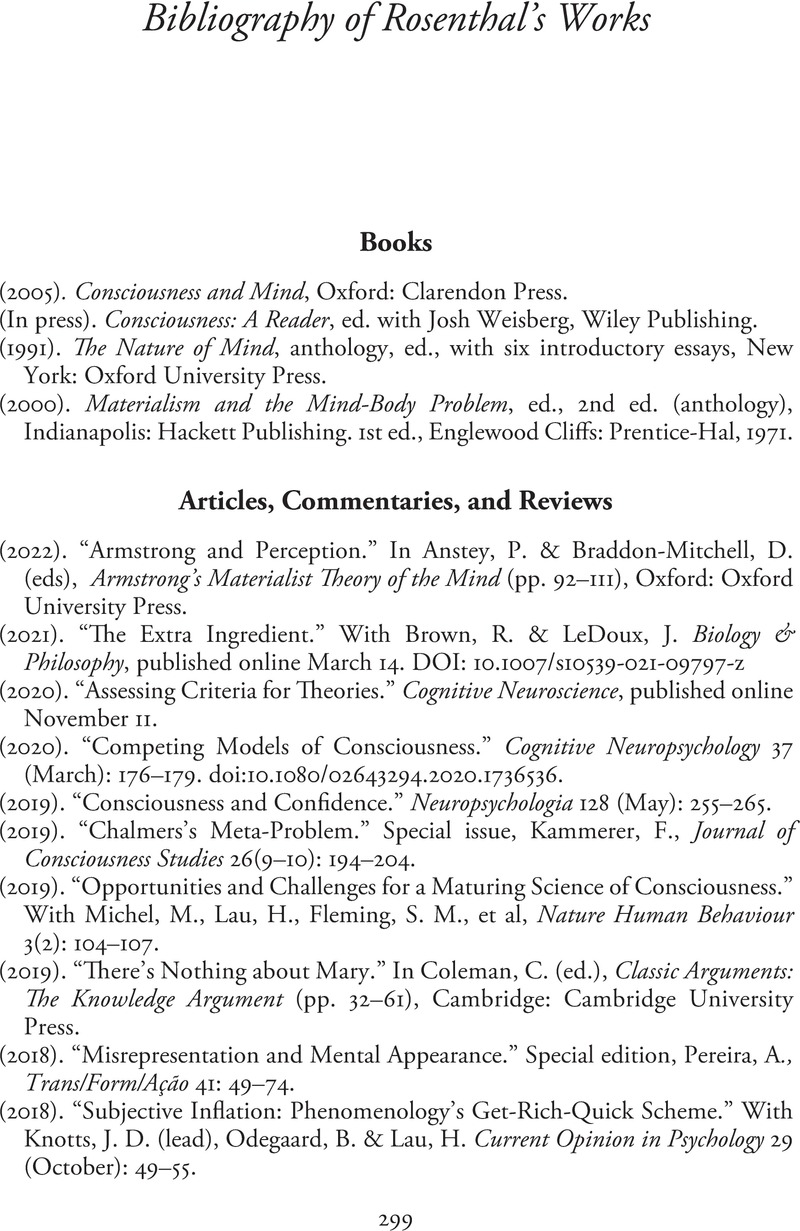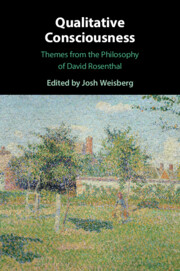Bibliography of Rosenthal’s Works
Published online by Cambridge University Press: 06 October 2022
Summary

- Type
- Chapter
- Information
- Qualitative ConsciousnessThemes from the Philosophy of David Rosenthal, pp. 299 - 304Publisher: Cambridge University PressPrint publication year: 2022



